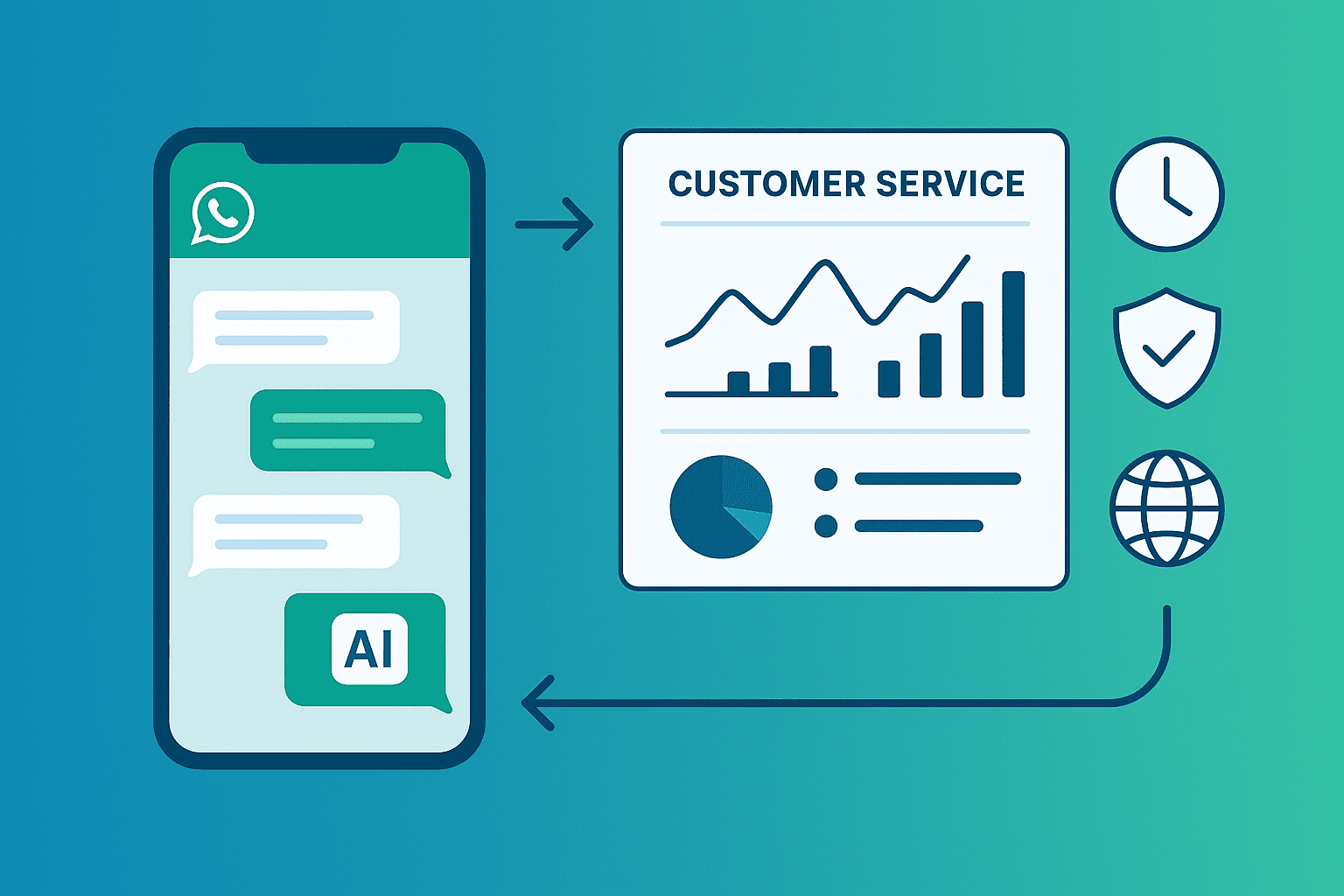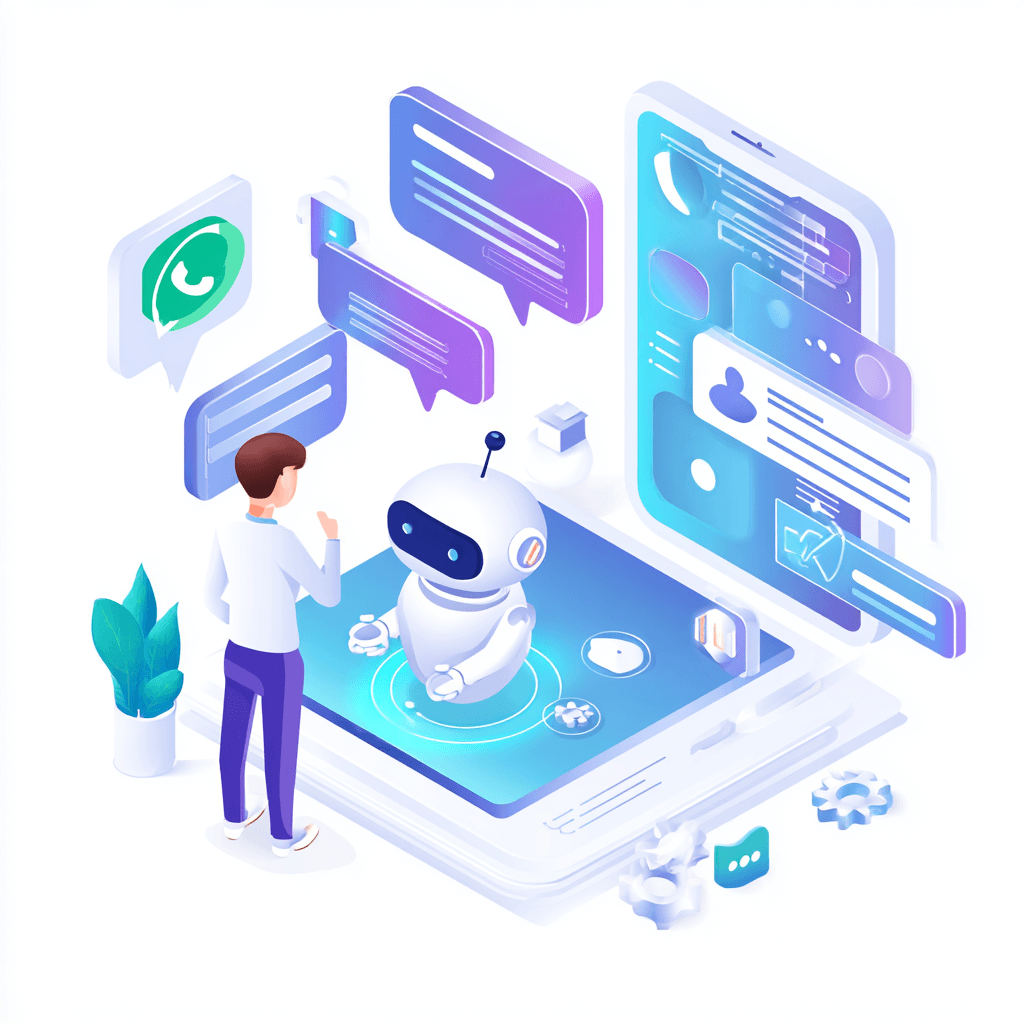WhatsApp Automation Best Practices
Master WhatsApp automation with these proven strategies and best practices to maximize customer satisfaction and business results.

WhatsApp Automation Best Practices
WhatsApp has become the primary communication channel for businesses worldwide, with over 2 billion users. But managing customer conversations at scale can be challenging. This guide covers essential best practices for WhatsApp automation.
1. Design Natural Conversations
Keep It Human
Your automated responses should feel natural and conversational:
✅ Good: "Hi! I'd be happy to help you find the perfect product. What are you looking for today?"
❌ Bad: "COMMAND_RECEIVED. PROCESSING_REQUEST. SELECT_OPTION_1_2_OR_3"
Use Appropriate Tone
Match your brand voice:
- Formal: Professional services, legal, medical
- Casual: Retail, entertainment, food service
- Friendly: Hospitality, education, community
Emojis and Formatting
Use thoughtfully:
- ✅ One or two relevant emojis per message
- ✅ Bold for important information
- ❌ Excessive emojis or caps lock
- ❌ Complex formatting that breaks on mobile
2. Set Clear Expectations
Welcome Message
Your first automated message should:
- Greet the customer
- Introduce your business
- Explain what the bot can do
- Offer a human option
Example:
👋 Welcome to CXWizard!
I'm your AI assistant, here to help 24/7 with:
• Product information
• Order status
• Booking appointments
• General inquiries
How can I help you today?
(Type "human" anytime to speak with our team)
Response Time
Be upfront about timing:
- Instant responses for automated messages
- Clear timeline for human escalation
- Away messages during maintenance
3. Handle Context Effectively
Remember Previous Conversations
Use conversation history to:
- Reference past orders
- Continue previous discussions
- Personalize recommendations
- Avoid asking for information twice
Context Switching
When topics change:
- Confirm the switch
- Summarize the previous topic
- Offer to return if needed
Example:
I understand you want to switch from order tracking to product inquiries.
Your order #12345 is on track for delivery tomorrow.
Now, what product information can I help you with?
4. Provide Clear Options
Menu Structure
Design intuitive menus:
- Limit to 3-5 options per menu
- Use clear, action-oriented language
- Include a "back" option
- Offer free-form input alternative
Quick Replies
Implement quick reply buttons:
What would you like to know?
[Product Info] [Track Order]
[Book Appointment] [Speak to Human]
5. Handle Errors Gracefully
Recognition Failures
When the bot doesn't understand:
✅ Good Approach:
I'm not sure I understood that correctly. Could you rephrase or choose from these options?
1. Product information
2. Order tracking
3. Speak with a human
❌ Bad Approach:
ERROR: INVALID_INPUT
Escalation Triggers
Automatically escalate when:
- Customer asks for human help
- Sentiment turns negative
- Same question asked 3+ times
- Complex issue detected
- Customer uses profanity
6. Personalization Strategies
Use Customer Data
Personalize with:
- Customer name
- Purchase history
- Location
- Preferences
- Language
Dynamic Content
Tailor messages based on:
- Time of day
- Customer segment
- Current promotions
- Cart contents
- Browsing history
Example:
Good morning, Sarah! 👋
I noticed you were looking at our winter collection yesterday. We just added 20% off all winter items today!
Would you like to see your saved favorites?
7. Optimize Response Times
Balance Speed and Quality
- Simple queries: Instant response
- Product info: 1-2 seconds
- Complex calculations: 3-5 seconds
- Human escalation: Under 5 minutes
Loading Indicators
For longer processes:
One moment while I check that for you... ⏳
[Processing...]
8. Multilingual Support
Language Detection
Automatically detect and respond in customer's language:
- Analyze incoming message language
- Remember language preference
- Allow language switching
- Support regional dialects
Translation Quality
Ensure accuracy:
- Use professional translations
- Test with native speakers
- Avoid literal translations
- Respect cultural nuances
9. Privacy and Security
Data Protection
Follow these guidelines:
- Never ask for passwords
- Encrypt sensitive data
- Follow GDPR/privacy laws
- Clear data retention policy
- Secure payment processing
Permission-Based Messaging
Always get consent:
- Opt-in for marketing messages
- Subscription preferences
- Easy unsubscribe option
- Respect "Do Not Disturb" times
10. Analytics and Optimization
Key Metrics to Track
Monitor these indicators:
- Response time
- Resolution rate
- Escalation rate
- Customer satisfaction (CSAT)
- Conversion rate
- Common queries
- Drop-off points
Continuous Improvement
Regular optimization:
- Weekly conversation reviews
- Monthly performance reports
- A/B test responses
- Update knowledge base
- Refine escalation triggers
11. Integration Best Practices
Connect Essential Systems
Integrate with:
- CRM: Customer data and history
- E-commerce: Product catalog, orders
- Booking: Appointment scheduling
- Payment: Secure transactions
- Analytics: Performance tracking
API Usage
Best practices for integrations:
- Use webhooks for real-time updates
- Implement error handling
- Cache frequently accessed data
- Set reasonable timeouts
- Log all API calls
12. Compliance and Regulations
WhatsApp Business Policy
Follow official guidelines:
- 24-hour messaging window
- Template messages for proactive outreach
- Clear opt-out mechanism
- Business verification
- No spam or promotional abuse
Industry-Specific Rules
Additional requirements for:
- Healthcare: HIPAA compliance
- Finance: PCI DSS for payments
- EU customers: GDPR compliance
- Children's products: COPPA rules
Common Mistakes to Avoid
1. Over-Automation
Don't automate everything. Some situations need human touch:
- Complaints and frustration
- Complex problem-solving
- High-value sales
- Sensitive issues
2. Poor Escalation
Make human handoff smooth:
- Provide full context to agent
- Don't make customer repeat information
- Quick transfer process
- Clear transition message
3. Ignoring Feedback
Listen to customers:
- Monitor satisfaction scores
- Read conversation logs
- Act on complaints
- Implement suggestions
4. Outdated Information
Keep content current:
- Regular database updates
- Seasonal adjustments
- Pricing changes
- Product availability
Testing Checklist
Before launching:
- Test all conversation flows
- Verify escalation triggers
- Check mobile formatting
- Test in multiple languages
- Validate integrations
- Review error handling
- Test with real users
- Monitor initial rollout
- Prepare support team
- Document all features
Tools and Resources
Recommended Tools
- CXWizard: Easy to setup WhatsApp Customer Service AI assistant
- WhatsApp Business API: Official API access
Learning Resources
- WhatsApp Business Documentation
- Industry best practice guides
- Online communities and forums
Conclusion
Effective WhatsApp automation balances technology with human touch. By following these best practices, you can:
- Improve customer satisfaction
- Increase operational efficiency
- Drive more sales
- Scale your business
- Maintain quality service
Remember: automation should enhance, not replace, the customer experience.
Next Steps
- Audit your current setup: Identify areas for improvement
- Implement gradually: Start with high-impact changes
- Measure results: Track key metrics
- Iterate continuously: Keep optimizing
Ready to implement these best practices?
Have questions about WhatsApp automation? contact support.
Related Posts

Frequently Asked Questions About WhatsApp Chatbots
Get real answers about WhatsApp chatbots for small businesses. No tech jargon, no sales fluff - just honest information from people who've been where you are.

The Best Guide to WhatsApp Chatbots for Small Businesses (2026)
Tired of missing sales after hours? This guide explains how a WhatsApp chatbot works, why it's a game-changer for small businesses, and how to get started without the tech headache.

CXWizard vs. AiSensy — Which WhatsApp automation should you choose?
Compare CXWizard and AiSensy: pricing, features, pros & cons for small businesses using WhatsApp automation. See which saves you money and captures more leads.